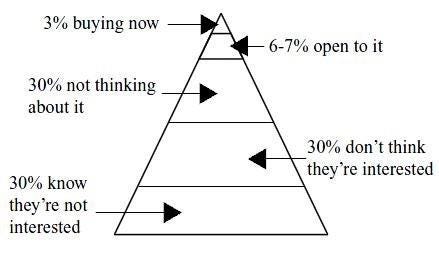Account Selection: A Quick Guide To Avoid The #1 Mistake In Prospecting
A Step-by-Step Approach
Read time: 3 min
New episode on the SDR Game Podcast:
Listen to the episode here: YouTube, Spotify, or Apple Podcasts.
We've all been there, haven't we?
Adding accounts that don't fit, and wasting our and AEs’ precious time with meetings that don't lead anywhere.
It's a common mistake.
But why do we keep making this error?
Most of the time, it's because we're not clear on who our Ideal Customer Profile (ICP) really is.
We label companies with 200-1000 employees as our target and stop there.
But that's a tiny piece of the puzzle.
Let me tell you, messaging matters.
But sending the right message to the wrong account won't get you anywhere.
Over time, I've got pretty good at spotting customer patterns and choosing the right accounts.
This skill has helped me become a top-performing SDR at 4 different tech companies, and it can do the same for you.
Today, let's talk about how you can start picking your accounts the right way:
Step 1: Know Your Customers
Think about your current customers.
What are they like?
Can you see any patterns?
This week, I took a close look at our clients at CastorDoc and boy, did I learn a lot!
Think of it like a detective game.
You're looking for patterns in their tech usage, their team sizes, the industries they rock.
These are your clues to who they are.
Decoding their demographics and tech use is like finding the secret key.
It's what helps us unlock the right accounts.
So, here are the things I try to find out:
What kind of technology do they use? You can usually spot this on their website if they have a web app. If not, check into their job descriptions or LinkedIn profiles.
Which industry do they belong to? I usually check Clearbit or LinkedIn for this info.
Is the company growing? I use LinkedIn Sales Navigator to find this information
Who are our biggest customers and what industries do they come from?
How big are their end-user teams?
Do they have specific titles on their teams?
The aim of this friendly detective game is to spot patterns and gather data.
Remember, this isn't about creating a list based on personal opinions or whims.
It's about building it on solid customer understanding.
Here's a bonus tip:
Don't forget to review your demos or customer calls.
They can be gold mines of information that you might not find anywhere else.
Step 2: Define Your Ideal Customer Profile (ICP)
Now that we have our clues, let's sketch a picture of our ideal customer.
Think about the stuff that's important for your product.
What's crucial for your product?
Now, every product is different.
So, what works for my seat-based products might be different for yours. But to give you an idea, here are the things that I usually look for:
Size of the company
Industry
Size of the end-user teams
What kind of tech do they use
Where they're located
How their teams are structured
Let's get a little specific.
Here are some examples from my experiences:
For CastorDoc (Data catalog): companies using specific technologies: dbt, MonteCarlo, and end-user titles: Analytics Engineers, Data Platform leaders, and Data governance manager. With at least 10 people within the data team, and companies with max 10k employees.
For Chili Piper (Scheduling): SaaS businesses with the SDR/AE structure and selling to SMB or Mid-Market accounts located in North America, and Europe. With at least 10 sales reps.
For Talkpush (Recruitment CRM): companies with high turnover, and high hiring targets: supermarkets, call centers, airlines, located in Latam, and APAC, with at least 10 recruiters
Step 3: Seek Out the Buyers
Okay, we've now identified our ideal customer, but are they actually in the market to buy?
That's the golden ticket!
When creating your account list, we need to give priority to those who are buying.
Because let's be real, not everyone on your list will be ready to swipe their cards.
But how do you figure out who's in the buying mood?
To find those are buying right now, I check out:
Communities: prospects who are exploring or evaluating my competitors
ZoomInfo Intent
Job openings: Companies who are hiring my end-users and are looking to solve what my product can solve
Here are some other ways to spot the right accounts and add them to your prospecting list:
Closed/lost opportunities
No-shows
Competitors of our customers
Customers of our partners
Communities: I use Slack channels to find prospects who are asking questions about the problems I can solve
Does someone know a prospect working for this account?
Visited our website: I can see that on Clearbit or Husbpost
Your goal is to make a list based on facts, not opinions.
If an account doesn't tick most of the boxes, it's a no-go.
Keep it simple, data-driven, and you'll become account-picking superstars!
Practical tip
Review your customers, and find the common criteria.
Then start making a list based on the criteria you found.
If an account doesn’t fit those criteria you shouldn’t add it to your account prospecting list.
That's all for this Sunday.
Quick Reminder: If you like my emails please do “add to address book” or reply.
See you next week.
Happy prospecting ✌️
Elric
As soon as you're ready, I can help you in 2 different ways:
Check the previous SDR Game newsletter I sent, here's the link.
Check my podcast, where I interview top-performing SDRs, you can watch the episodes on Spotify, and YouTube.



